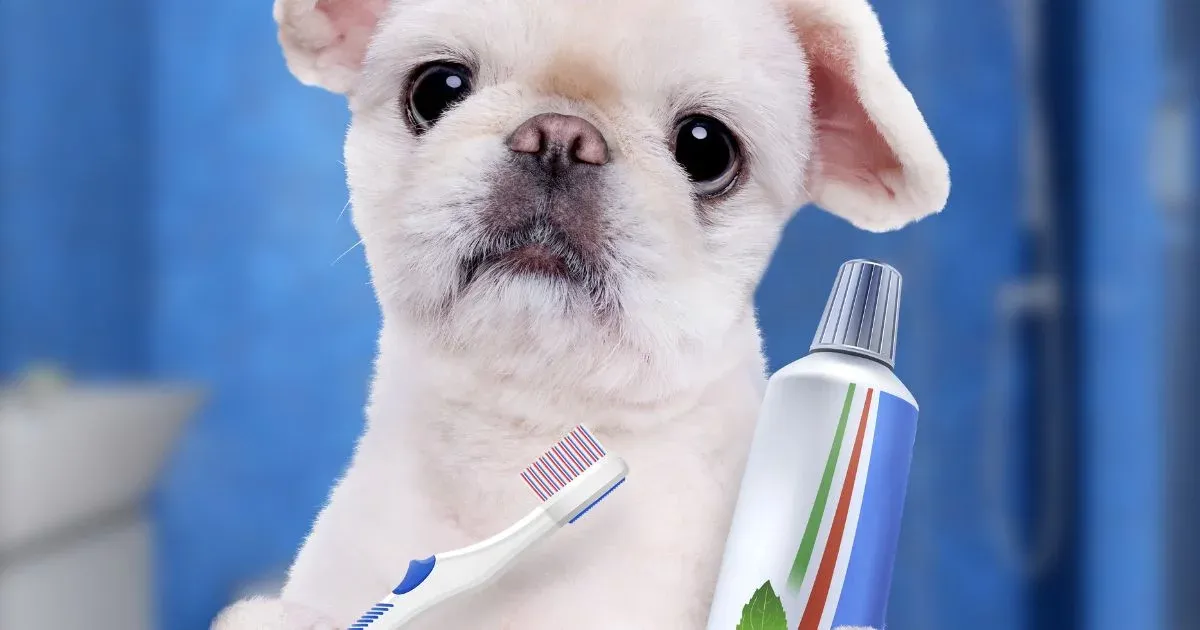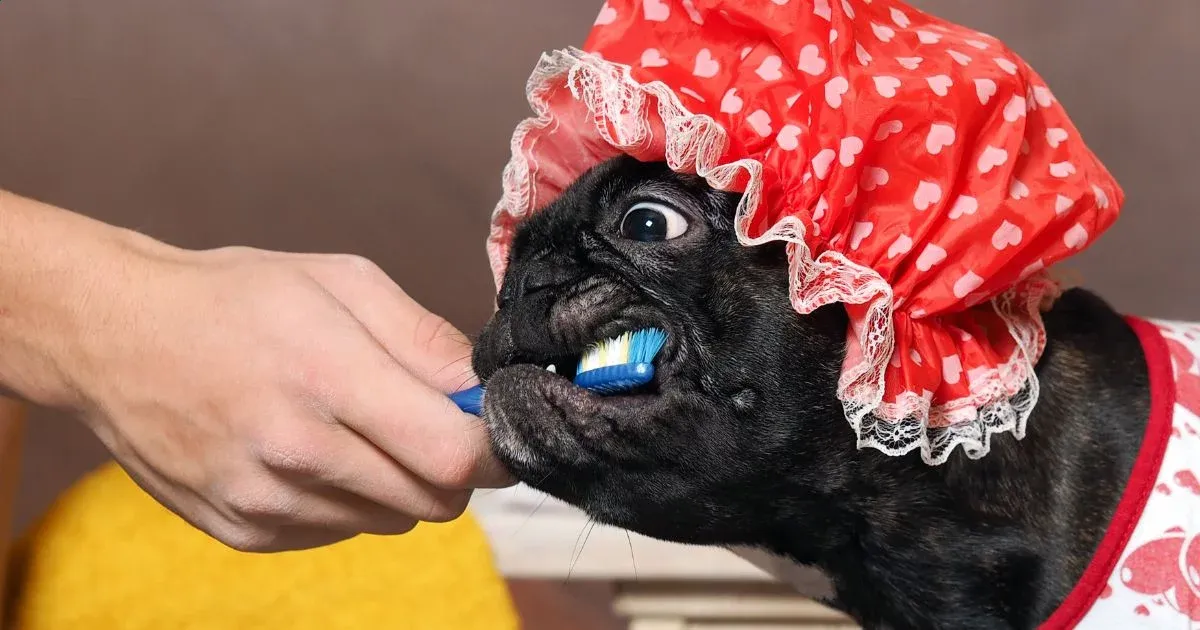Dental health for your dog is just as vital as it is for you. In addition to increasing your dog's ability to prevent periodontal disease, taking good care of his teeth can also enhance his general health. While many dog owners lament that their canines don't love having their teeth brushed, the truth is that brushing teeth isn't particularly enjoyable for owners either. Pic@ Getty Images Signature.
It would be simpler for you both if you educate your dog to brush. As per the American Veterinary Medical Association, up to sixty-five percent of dogs suffering from periodontal disease go untreated.
If dental treatment was received from the beginning, this figure might be substantially lower. If you could just teach your dog to brush and clean his teeth on a regular basis, he could live a healthy, long life with his teeth. You may like to read how to outsmart and get rid of mice in your home here.
Specifying the Work.
It takes more than just brushing your dog's teeth to teach him to brush them. It's about giving yourself, a caretaker, a groomer, or a veterinary tech permission to put your fingers in his mouth without causing him discomfort or risking a bite.
Your dog will always believe that everything you place close to his lips is food. Since your fingers might be among them, teaching your dog to brush his teeth will also teach him not to consume the toothpaste or bite your fingers or the toothbrush.
It is undoubtedly easier to brush your dog's teeth while they are a puppy than it is to try to train an adult dog to tolerate this novel experience. You may need to employ a few techniques to pique your dog's attention and help him overcome his phobia. Be sure to develop patience as well.
Beginning.
You will need some very crucial supplies, like a dog toothbrush and dog toothpaste, to begin training your dog to brush his teeth. Don't use toothpaste intended for humans. Dogs are poisoned by fluoride, which is frequently present in toothpaste for humans. Both your neighborhood pet store and your veterinarian's office carry dog toothpaste.
It's also crucial to get the ideal toothbrush for your dog. According to studies, the ideal toothbrush for cleaning your dog's gum line is a double-headed model with bristles angled at a 45-degree angle. This is because gum health is crucial for overall dental health.
Until your dog gets acclimated to the toothbrush and the movements in their mouth, you might want to be ready with a few extra treats and possibly even a companion for the first few occasions.
The Gradually Introduce Approach.
Getty Images

1 - Begin with your fingertips.
It's possible that your dog isn't used to your fingers being in his mouth. Before you even begin brushing your dog's teeth, play with his lips and gums and put your fingers in his mouth many times a day for a few days.
2 - Presenting the toothbrush.
You can give your dog a toothbrush once he is comfortable having his mouth handled. Put the toothbrush in front of your dog's nose so he can sniff and explore. When you initially give your dog the toothbrush, just let him explore, lick, and sniff as he pleases.
3 - Introduce the toothpaste.
Introduce the toothpaste and brush to your dog using a pea-sized amount on their new toothbrush. Allow him to taste and sniff it, but keep it away from him.
4 - Clean up.
Introduce the toothbrush and a tiny quantity of toothpaste to a few teeth by running the brush along the gum lines and length of the teeth, without brushing all of his teeth.
5 - Reward.
Every time your dog lets you brush his teeth, make sure to give him a treat.
6 - Consolidate.
Once your dog is used to his mouth being touched, your fingers in his mouth, the toothbrush, and the taste of the toothpaste, build up to brushing more teeth. Every time you give your dog a toothbrush, you can give it a longer brushing session and brush more teeth.
The Hold Your Dog Technique.
1 - Hold on tight.
Put your arm around your dog's shoulders gently and hold on firmly.
2 - Raise your top lip.
Grasp your dog's upper lip from below his nose with the same arm.
3 - Clean up.
With your dog curled up comfortably under your arm and his lips pushed upward, use a tiny toothbrush and a tiny bit of canine-specific toothpaste. Brush as many teeth as he will let you to gently brush before he starts to wriggle. You may like to see 23 pics that the photographer hilariously interrupted by wildlife here.
4 - Again.
The following day, repeat this procedure with your dog's lower teeth. You might want to brush his top teeth on a different day from his bottom teeth as he adjusts to this new schedule.
5 - Exercise.
To help your dog become accustomed to the position and the act of brushing teeth, repeat these steps every few days. To keep your dog's mouth healthy, be sure to brush their teeth once a week.
The Finger Brush Method.
 |
| Getty Images |
Insert one or two fingers very carefully inside your dog's mouth and begin by rubbing along the gums.
2 - Again.
Repeat this over the course of a few days until your dog is used to your fingers being in his mouth and you have stroked the gums along his top and bottom teeth.
3 - lengthen the duration.
Once a few days have passed, try to claim more each time you leave your finger in your dog's mouth.
4 - Put toothpaste in it.
Never use human toothpaste; instead, apply dog toothpaste on the tips of your fingers and follow the preceding instructions. Keep your finger in his mouth as long as you can, covering as many surfaces as you can with toothpaste.
5 - Toothbrush.
After your dog has become accustomed to the flavor of toothpaste and the sensation of your finger in his mouth, give him a toothbrush and a pea-sized quantity of dog toothpaste.
6 - Clean up.
Once your dog is accustomed to the toothbrush's sensation and the toothpaste's flavor, keep brushing them once a week.
Frequently Asked Questions.
Why does my dog bite me when I brush his teeth?
If he bites during brushing, it's either because he doesn't like brushing, he's afraid of the brush, or he's experienced maltreatment in the past.
How do I get my dog to stop biting when I brush it?
You'll need to reprimand your small dog if he bites or snaps at you or the brush. Refrain from yelling or being overly strict as this will not help. After giving him a quick rest and a treat, let him to sniff the brush once more. Make sure his puzzle toy is interesting and filled.
What is the best brush for a dog who hates being brushed?
Generally, a bristle-style brush works on all coat types but is softer on a pet's delicate skin than a human brush," Wildman says. "For smooth, short-haired coated pets such as Chihuahuas, you would search for a brush that has gentler bristles.
Thanks
Written By HowNHowTo.Com Team
